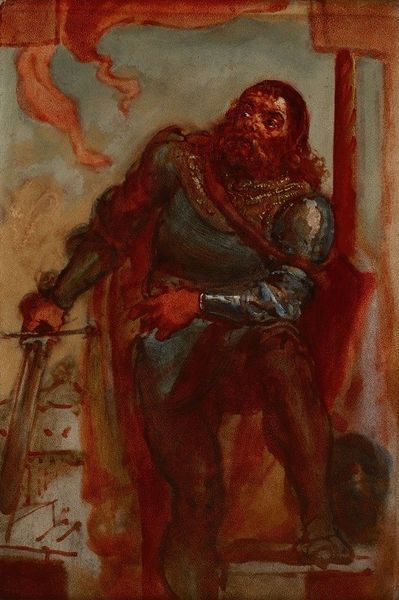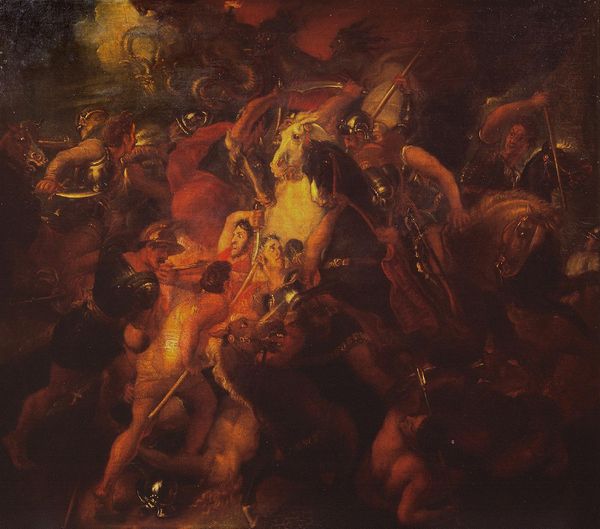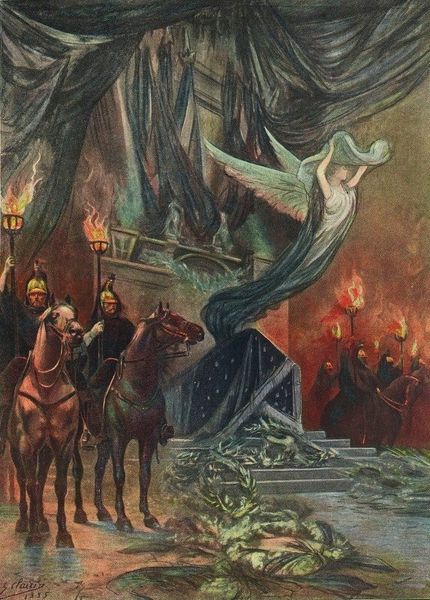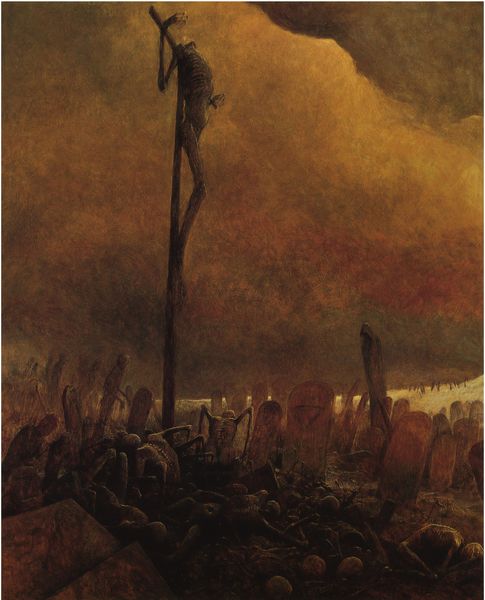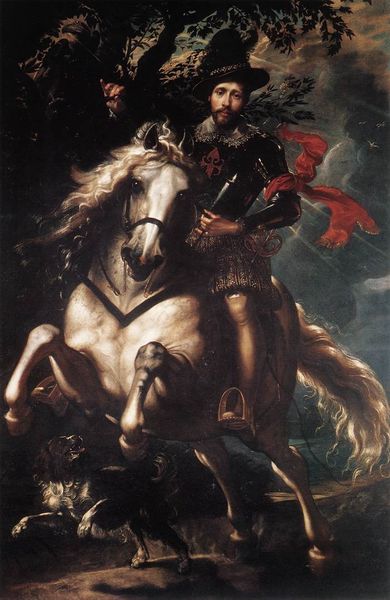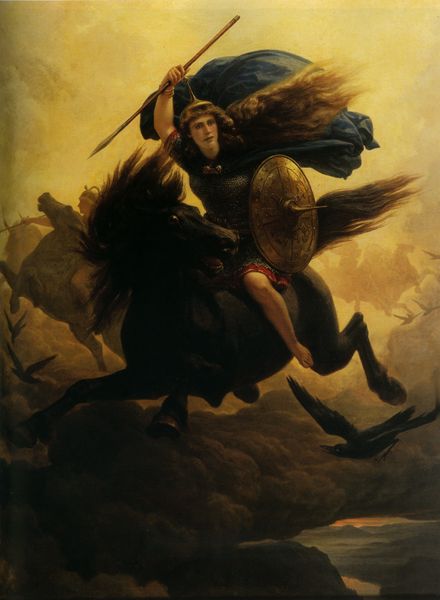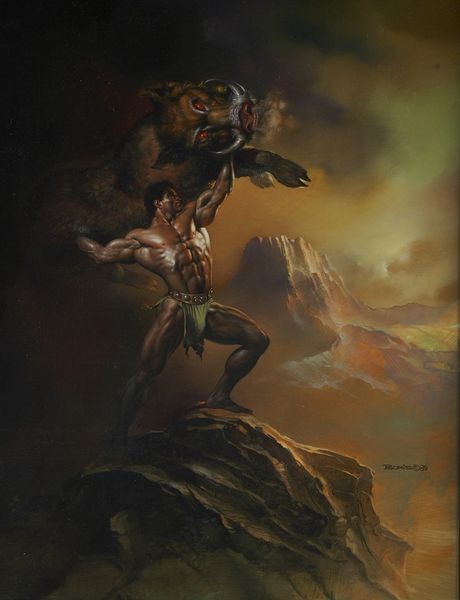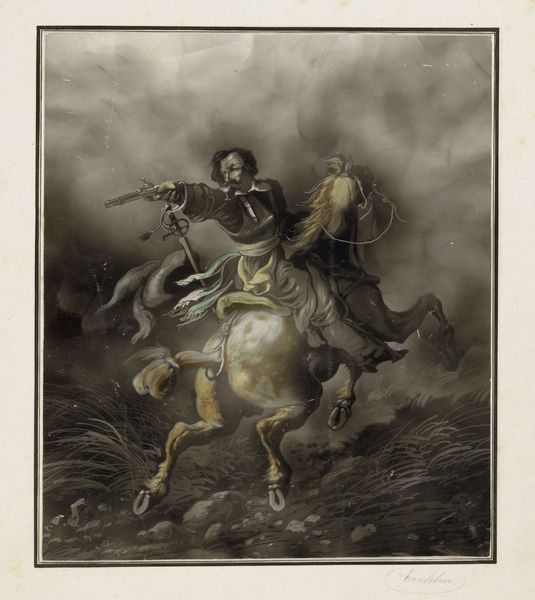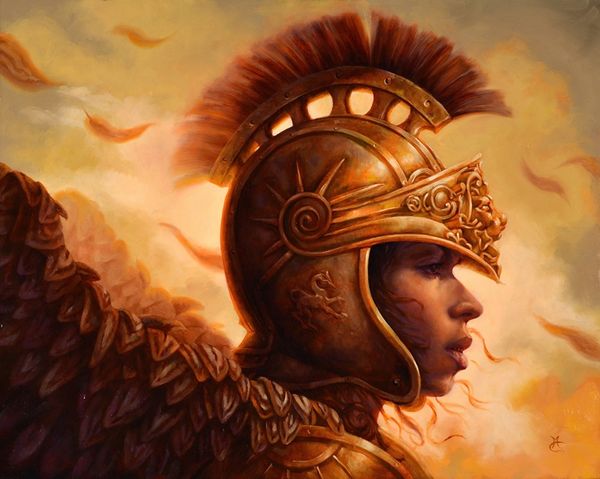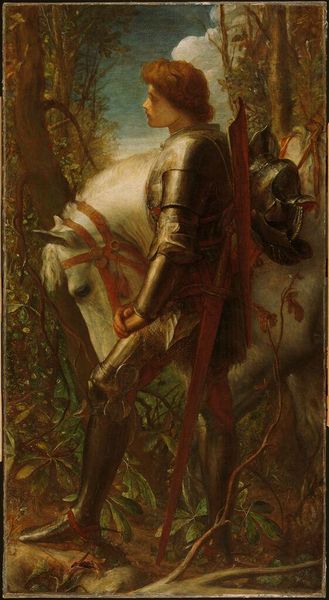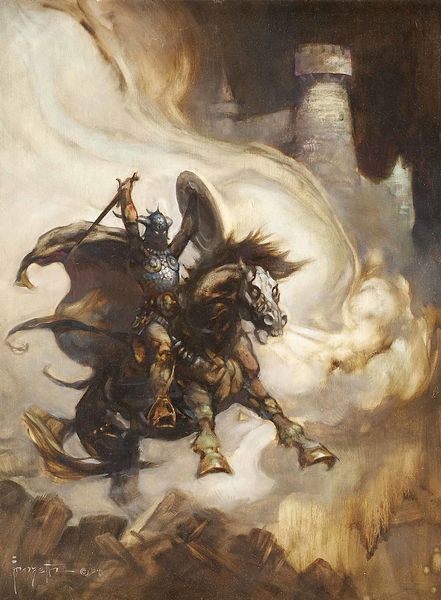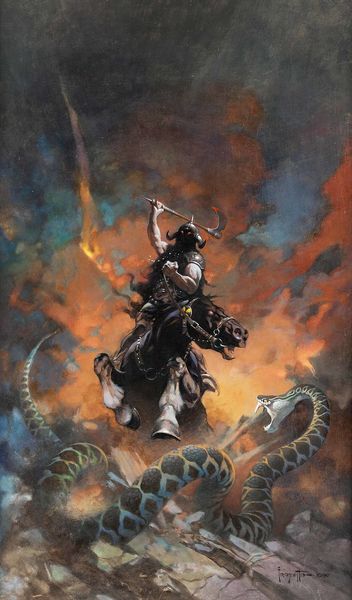
oil-paint
#
portrait
#
figurative
#
abstract painting
#
oil-paint
#
landscape
#
german-expressionism
#
figuration
#
oil painting
#
neo expressionist
#
expressionism
#
history-painting
#
watercolor
#
expressionist
Copyright: Public Domain: Artvee
Curator: This painting, titled "The War," was completed by Hans Thoma in 1907. Editor: Well, it certainly feels apocalyptic. That figure in the foreground, starkly lit against the fiery backdrop, exudes a disturbing calmness, a sort of acceptance of inevitable destruction. It's incredibly unsettling. Curator: The figure is a clear representation of a soldier, isn't it? The helmet, with its dragon spitting fire, becomes an immediately powerful symbol, harkening back to mythological portrayals of conflict and chaos, especially through the image of a dragon—it recalls a timeless sense of destruction and dread. Editor: Yes, and that helmet isn't just a symbol, it's crafted. You have to wonder about the artisan, the metalworker, perhaps even the conscription of labor required to make such ornamented instruments of war. What were the material conditions, the availability of metal and paint, the social pressures present that allowed for the creation of this work? It’s as much about artistic labor as it is martial power. Curator: It reflects how war isn't just political or physical; it becomes culturally embedded, expressed through art and craft. Notice the subject’s expression: it is haunting. Is it courage, resignation, or even madness staring back at us? The artist invites a deep look into the psychology of a soldier. It embodies the turmoil and internal landscape of the conflict. Editor: The application of oil paint seems particularly relevant here. It has an almost primal crudeness in places, hasn't it? The roughness, those quick strokes – it matches the theme. I imagine the artist worked quickly. It's a stark contrast to, say, an academic history painting focused on glorifying victory. This has a raw quality. Curator: The artist evokes emotions effectively through symbolism: the figure’s fixed gaze signifies an inner strength or perhaps an emotional shutdown amidst the brutality of war, whilst the red skies stand as potent symbol of destruction and sacrifice—themes prevalent in any representation of battle throughout time. Editor: And consider what he chose to emphasize, which colours, which figures. The blurred figures in the background also give it a sense of unreality and immediacy. The use of a restricted colour palette—mainly fiery oranges and dark blacks—suggests something very economical was occurring in its production, maybe because of supply chain issues with resources during this moment. Curator: Indeed, it pulls us back from any heroic narrative, revealing instead the stark realities of human conflict, the cyclical nature of destruction. Editor: Yes. The entire production underscores how intrinsically conflict touches upon artistic creation, both reflecting and perpetuating societal values. It’s sobering, isn't it?
Comments
No comments
Be the first to comment and join the conversation on the ultimate creative platform.
